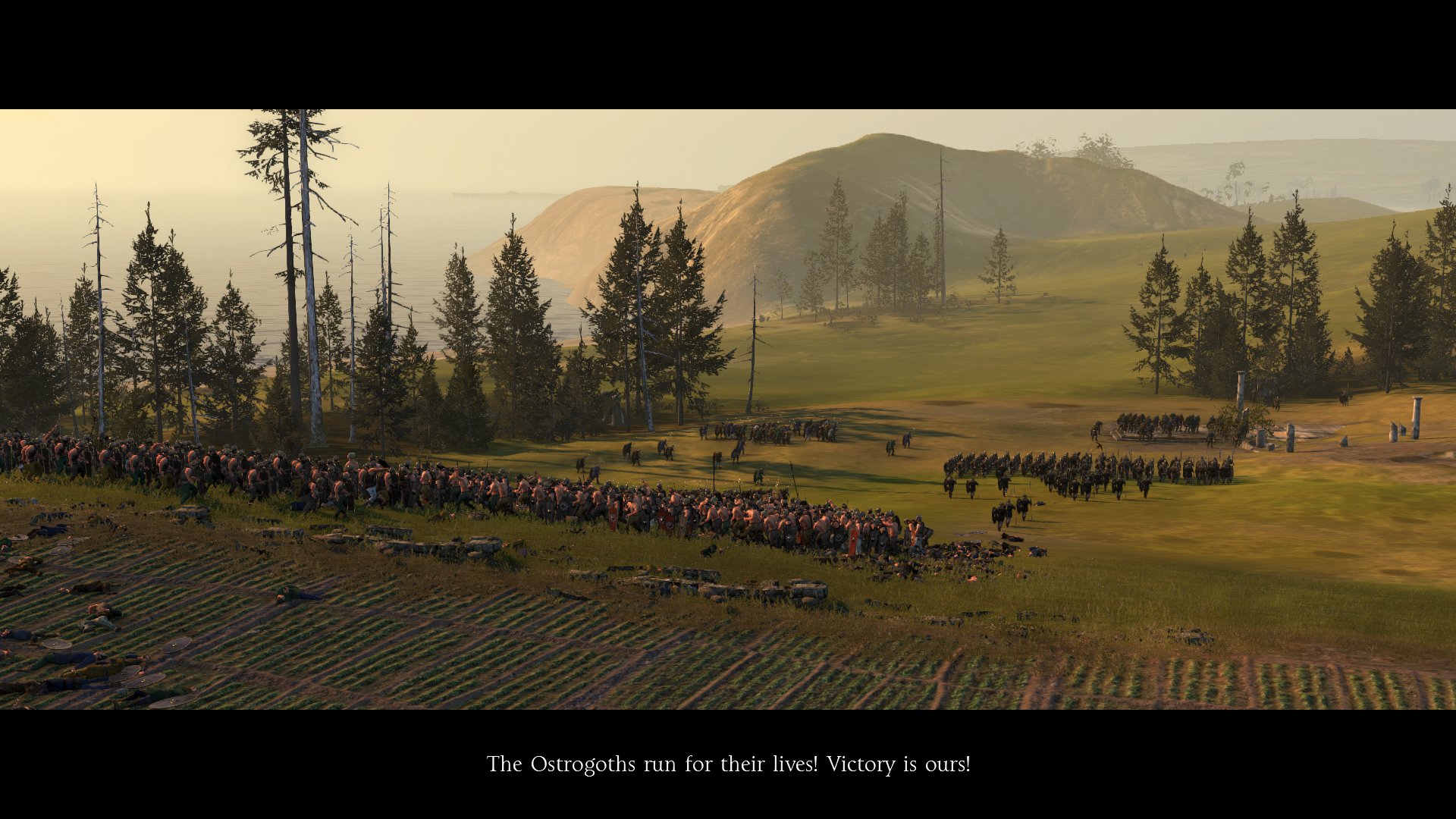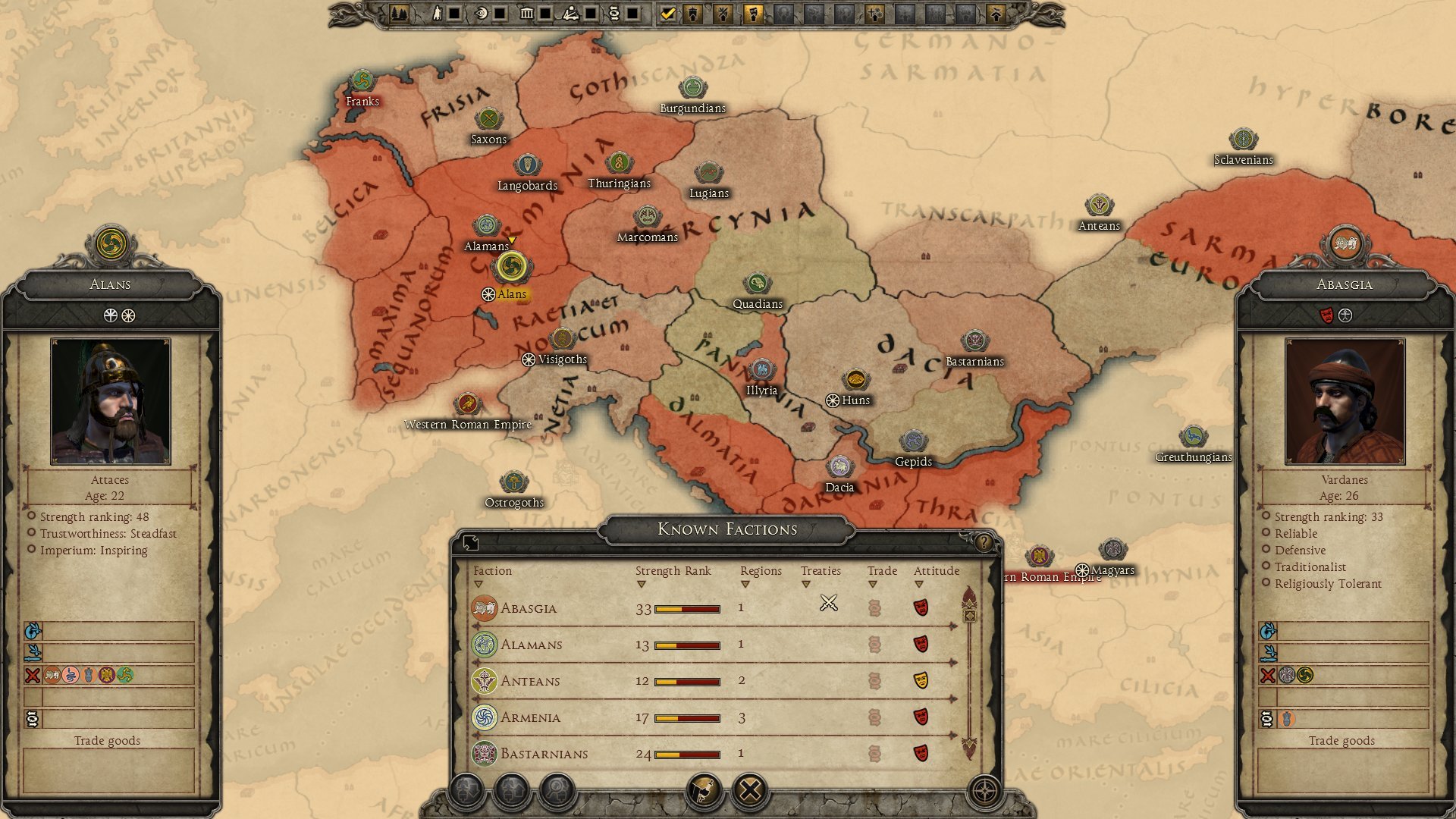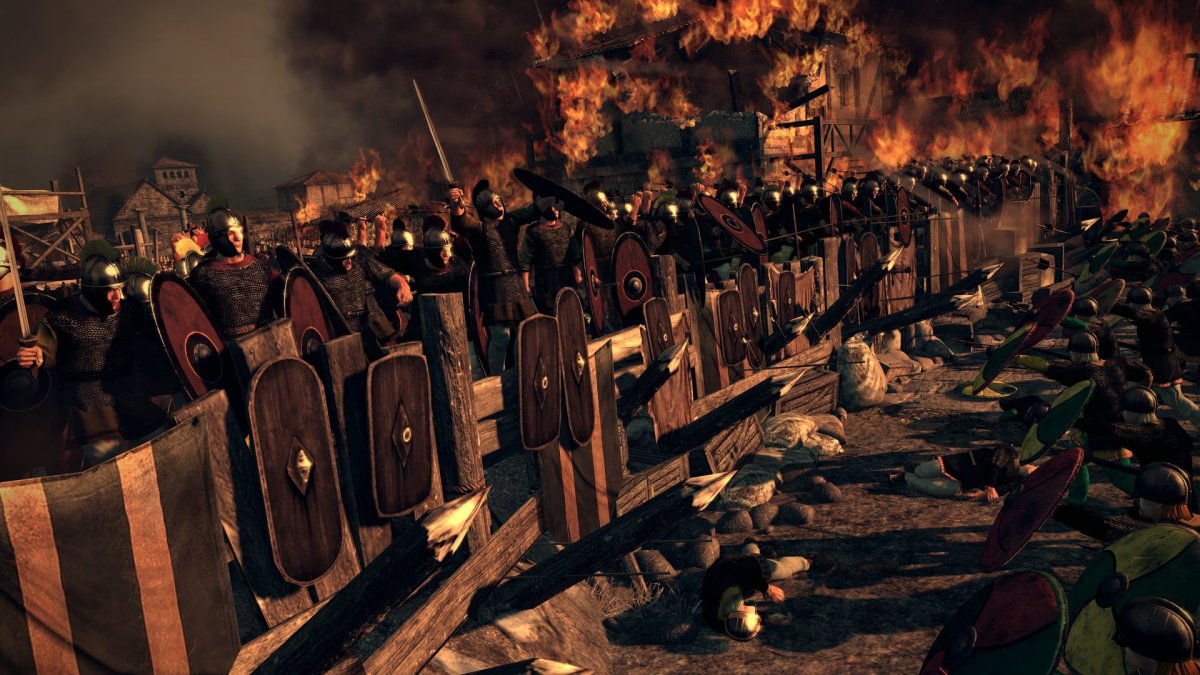Before we embark on this journey that is Total War: Attila together, I feel it would only be fair to give you, the reader, a good baseline on where I am coming from in terms of initial expectations for the game and the kind of things that might have affected my perspective on the game.
As a big fan of the Total War series, I was disappointed by Total War Rome 2, which you can read all about right here. With such an experience relatively fresh in my mind, it would come as no surprise to anyone that my excitement and expectations for Total War: Attila were lukewarm at best.
Speaking of other games, this review will also not be purely about the merits, and demerits, of Total War: Attila alone, in a vacuum, where absolutely everything else is disregarded. It just cannot be. Total War: Attila is the spiritual remake of an expansion pack to a game which is the spiritual predecessor to the game that Total War: Attila was built around and to not even discuss the deep influences and differences from those games to Total War: Attila would be foolhardy.
So sorry if this wasn’t what you had in mind, but if you stick around, I promise to keep it fairly interesting! Let us begin, shall we?

Total War: Attila, just for those of you who didn’t know, is a spiritual remake of the Barbarian Invasion expansion for the original Rome Total War. It’s easy to see the similarities. You have the same factions to play as, there’s the same gameplay feature to play as a landless horde and the games are set in the same historical era. To even claim that it isn’t a spiritual remake, which, last time I checked, nobody was doing, would be quite silly indeed. Which is why it’s almost laughable when in promotional let’s plays and feature spotlights, they make it out to be these brand new, never before seen features.
I totally get it. It’s all marketing strategy, but what you need to understand as we move along is that nothing revolutionary is happening here. Everything has been tried before at least once before and Total War: Attila is essentially the developer’s chance of taking a second crack at it all. So really, the big question here isn’t what new features did they bring to the table, but instead, did they succeed in making those features better… or worse?

Well, first things first, we need to check if the basic tried and true aspects of Total War gameplay work and what better way to do so then by playing as the Western Roman Empire? Who cares if it’s “legendary” starting difficulty? I’m a veteran of the series and I know what I’m doing. A few turns in, with my empire crumbling from internal strife, economic woes and external forces, I watch my sanity draining away by the second. Thus, I decided to not shorten my lifespan from stress and went with a bit of Saxonic gameplay instead.
You may, or may not, be pleased to know that the gameplay is not dissimilar to what you would see in the Total War Rome 2 Emperor Edition. The map is still divided into provinces, which themselves are separated into smaller regions with the continuing infuriating feature of only province capitals having walls. However, what is less infuriating is that there is now less of an emphasis on controlling whole provinces. In Rome 2, you needed whole provinces in order to be able to issue edicts, but now, all you need to do is install a governor to a province and even if you own one region out of three, you will be able to reap the benefits of edicts.
How does one install governors? Well, through the family tree of course! Yes, the family tree that so many of us have missed is back, but now it’s bigger and badder (the good kind of bad) than ever because it has been interwoven into the whole faction politics hoo-hah that was practically a joke in Rome 2. No longer will you feel less invested in politics because you will be nurturing and growing your family tree, with plenty of illegitimate and legitimate children, as well as playing political intrigues with them that utilizes an interesting system of “influence points.”
No longer will you be pushing the agenda of randomly generated characters that seemed only tangentially connected to each other, you will now have dominion over a whole family as you juggle around marriages, assassinations, money embezzlement and even divorce, amongst other actions.

The Creative Assembly really have done a good job in fitting the family tree feature into Total War: Attila and making it work. Because if you think about it, they really put themselves in a bind when they severely limited the number of armies you can actually have. Gone were the days in Total War where you could have general-less stacks of soldiers or have multiple generals in one stack. With so few armies, you were theoretically going to have a lot of family members sitting around and doing nothing.
Luckily, with governors and other political offices to vie for, the family members who can’t be generals still have a shot at doing something productive. The whole idea of a “household” of ancillaries and equipment for your characters to equip and have as companions really ups the potential for strategy, as well as customization, with different companions and equipment doing vastly different things from speed boosts to commanded infantry to providing faction-wide research bonuses.

It’s really the smallest things that add up to make Total War: Attila an enjoyable experience. For example, the above image of a loading screen that I thought was pretty great. It breaks down new features for you, such as the new in-battle unit counters, telling you what each part represents. As you can see, the Creative Assembly has managed to fit a lot of information into a very small amount of space, for your convenience.
Information, or specifically the lack thereof, was a major gripe I had about Total War Rome 2. It seems someone was listening, or at least had the same thoughts as I, as a lot more information is now available for immediate viewing in province detail screens and the like without the need to hover your mouse over it for many, many seconds. For example, trade is now more transparent as there are now global prices of the goods one can import and export displayed in the trade window, not that the game has made it any easier to trade as it is still without the “what will make this work” button that made diplomacy all that much more tolerable in Total War titles prior to Rome 2.
No discussion about the bread and butter of Total War games would be complete without mentioning actual battles and how they’ve changed. The answer is not all that much. The ability to erect barriers on your streets when being besieged is a welcome one that helps you plan your defenses better, especially in those non-provincial capitals that spurn walls in favor of sad excuses for palisades.
The mechanic of defenders losing morale as they watch the city they are defending burn to the ground also adds another interesting aspect to attacking strategy. No longer will you only be thinking “can I afford to repair all these buildings?” but also “say I burn down all these buildings and make capturing the city easy as the defenders flee in terror, am I in danger of being counter-attacked any time soon and having my troops being heavily demoralized?”

Individual soldier models are better than ever, specifically in the individuality department. You will see short soldiers and tall soldiers. Men and women, with various different hair colors, hairstyles and/or facial hair. Within levys and militia, you will see far more variance in terms of what each individual soldier looks like in attire, but as you get more advanced units, their look becomes more standardized, as you would expect from professional soldiers. You will, however, see the odd thing once in a while, just as I have, as, what I can only assume is, the random soldier generator creating a very large, burly bearded man yelling out a war-cry that sounded like it originated from a pre-pubescent little girl.
So, as a whole, the normal aspects of Total War in Total War: Attila are improved versions of what you will find in Rome 2. So what about the not so normal aspects? What about hordes?
In order to investigate, I jumped into the Alans because I like cavalry, which was heavily overpowered in most of the previous Total War games. Not in Total War: Attila. Cavalry is at their most fragile yet in Total War history in Total War: Attila which is good news for game balance and very bad news for me as I played the Alans, a horde that starts predominantly as cavalry, surrounded by factions who predominantly use spearmen. Spearman absolutely rinse through cavalry, even if they just got charged up their backsides by heavy cavalry. So, yeah…

Yet, I still persevered. Even after trying my luck at raiding and sacking, only to anger the sleeping giant that is the Eastern Roman Empire and losing one of my two starting hordes, I decided to make a run for it and go to the safest place I can think of, away from the Huns: Britain. This is no mean feat, mind you, when your starting position is in the modern Ukraine.
The horde gameplay really exemplifies survival. You don’t get the feeling that you are an invulnerable horde of barbarians, unless you’re playing as the Huns, but instead you feel like a tribe of people, on the run, unwelcome in foreign lands, trying to subsist on whatever pastures you find. It really isn’t easy finding the perfect balance between encamping, in order to upgrade your horde buildings, recruit and replenish troops, raiding, to give a small boost to your economy whilst being able to move with quite a few penalties, and mass migrating, being able to travel much larger distances whilst severely impacting your horde’s fighting capabilities.
You have to keep check of integrity, which is essentially public order for your hordes or armies, whilst simultaneously trying to juggle the economics, military and food situation, also making sure to not anger every single other faction in the game, which is a little difficult because you anger them merely by existing. Letting either get out of hand means you will be running into a lot of wars, both civil and proper.
My Alani horde eventually made it to the English Channel, and after being embroiled in a war with the Frankish and capturing their capital in modern day Netherlands, I decided to go after the Frankish possessions in Britain and sent one of my newly minted stacks across the English Channel. This is where you start to see some really bizarre things, specifically with the AI. I don’t know if they are being malicious, super-aggressive or both, but of all the things to intercept my army crossing the English Channel, a full stack Eastern Roman Empire army was the last thing I expected. As I watched my 3/4 stack sink to Davy Jones’ Locker, there I saw my last real chance of gaining a foothold in Britain disappear. I also thought, what the hell is the Eastern Roman Empire doing all the way over here?

As long as there are Total War games, there will be people complaining that the AI is not competent enough or doing things realistically, like for example, sailing a whole full stack army to the English Channel to spite me for sacking one town. One.
While the AI in Total War: Attila is far superior to that of Rome 2, for example, it clearly understands best counters for units as they would rush spearmen to meet my flanking cavalry units, as well as use them to shield more vulnerable units, and make best use of walls when defending a city, things that the Rome 2 AI really didn’t do, it still isn’t perfect. Many times I’ve seen units just standing there, just sucking up missile attacks with nary an attempt to close with my ranged units as if they were resigned to their fates.
There were also some really weird glitches like how fences and other obstacles would just disintegrate around my units without them actually touching them, yet sometimes you would see soldiers vaulting invisible fences (the fences being long dissipated through what one can only imagine is the force). And whilst we’re on issues with Attila, I’ve been running the game on a machine that makes a complete mockery of the recommended system requirements for Total War Attila, but at maximum settings, bizarrely only the second highest tier of graphics below “extreme,” my machine was barely ever able to peak over 25 fps. Add in the fact that the visuals have basically not improved from Rome 2 and you really have to start scratching your head.
And another thing. Something that you wouldn’t expect The Creative Assembly to mess up, but mess up they did: The in-game encyclopedia. In my review-version of the game, the encyclopedia was online-only, but they stated that it will be usable offline come release. However, the problem wasn’t that I had to wait for the encyclopedia to load up in upwards of 6 seconds every time I used it, I counted, but that the information that you get in the encyclopedia is the poorest amount of information I’ve ever seen in any Total War encyclopedia. No indication of what building is needed in order to recruit a unit, you’re going to need to dig around in menus and windows for that. You also get vague descriptions such as “poor armor,” descriptions that you can already easily see by just hovering your cursor over their unit card.

I can keep going on and on about the smallest things, both good and bad, but this review needs to end at some point. There’s plenty to like and plenty to not like so much.
In the end, Total War: Attila is basically a very ornately designed roof plopped on top of a crumbly, dilapidated building. Most people will probably like the specific features that Total War: Attila brings to the table such as family trees and an upgradeable generals system, similar to the one we saw in Shogun 2, horde mode and the feeling that Armageddon is creeping upon you as the climate changes for the worse and the Huns become ever more aggressive.
However, we have to remember that Total War: Attila is built on top of Total War Rome 2 and if you were not a fan of how Rome 2 did things, you aren’t going to find many things to like in Attila, even with the new features, as they really only complement the vast majority of the slightly tweaked Rome 2 gameplay mechanics. If, on the other hand, you were happy with what Rome 2 became after all the patching and fixes, you will be very happy with Total War: Attila.
The Verdict
Total War: Attila, unlike its predecessor, isn’t broken. In fact, it is quite stable whilst simultaneously being quite challenging and fun at times. Unfortunately, it isn’t completely bug-free either and with every few steps forward, there’s a half-step back. All things considered, however, this is a solid Total War game that, while being far from revolutionary and requiring just a little bit more polish before official release, will be far better than Total War Rome 2 can ever hope to be. Total War: Attila is everything Total War Rome 2 was supposed to be with a few more added on bells and whistles, but if you didn’t like the essence of Rome 2, those bells and whistles won’t do anything for you.











Published: Feb 12, 2015 05:59 am